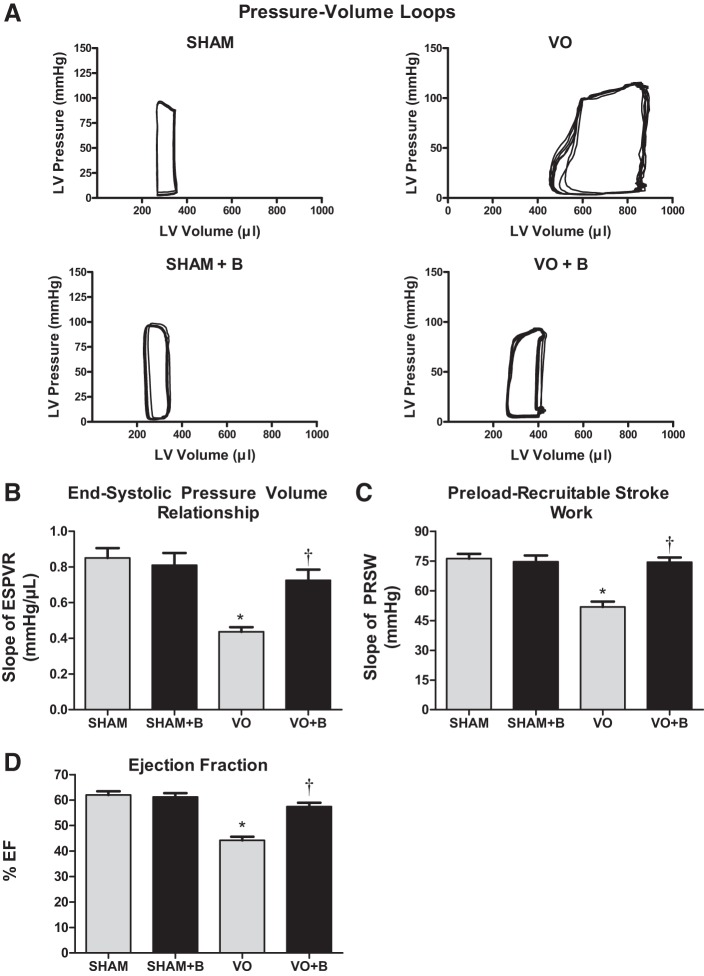Fig. 7.
Lysyl oxidase (LOX) inhibition maintained cardiac contractility and largely preserved function in volume overload (VO). A: representative left ventricular (LV) pressure-volume loops recorded at steady state for each group [sham surgery (sham group), VO surgery (VO) group, sham + LOX inhibitor (β-aminopropionitrile; sham + B group), and VO + LOX inhibitor (VO + B group)]. Chronic VO produced significant LV dilation, as indicated by a rightward shift of the pressure-volume loop compared with the sham group. Treatment with LOX inhibitor prevented much of this LV dilation. B and C: end-systolic pressure-volume relationship (ESPVR) and preload recruitable stroke work (PRSW) were determined by recording P-V loops at varying preload conditions (i.e., occlusion of the inferior vena cava) and used as indicators of LV contractility. Contractility was significantly reduced in the VO group along with ejection fraction (EF). Both indexes of contractility and EF were improved with LOX inhibition and were not significantly different than the sham control group. n = 4–8 animals/group. Statistical significance is denoted by *P < 0.05 vs. the sham group and †P < 0.05 vs. the VO group.

